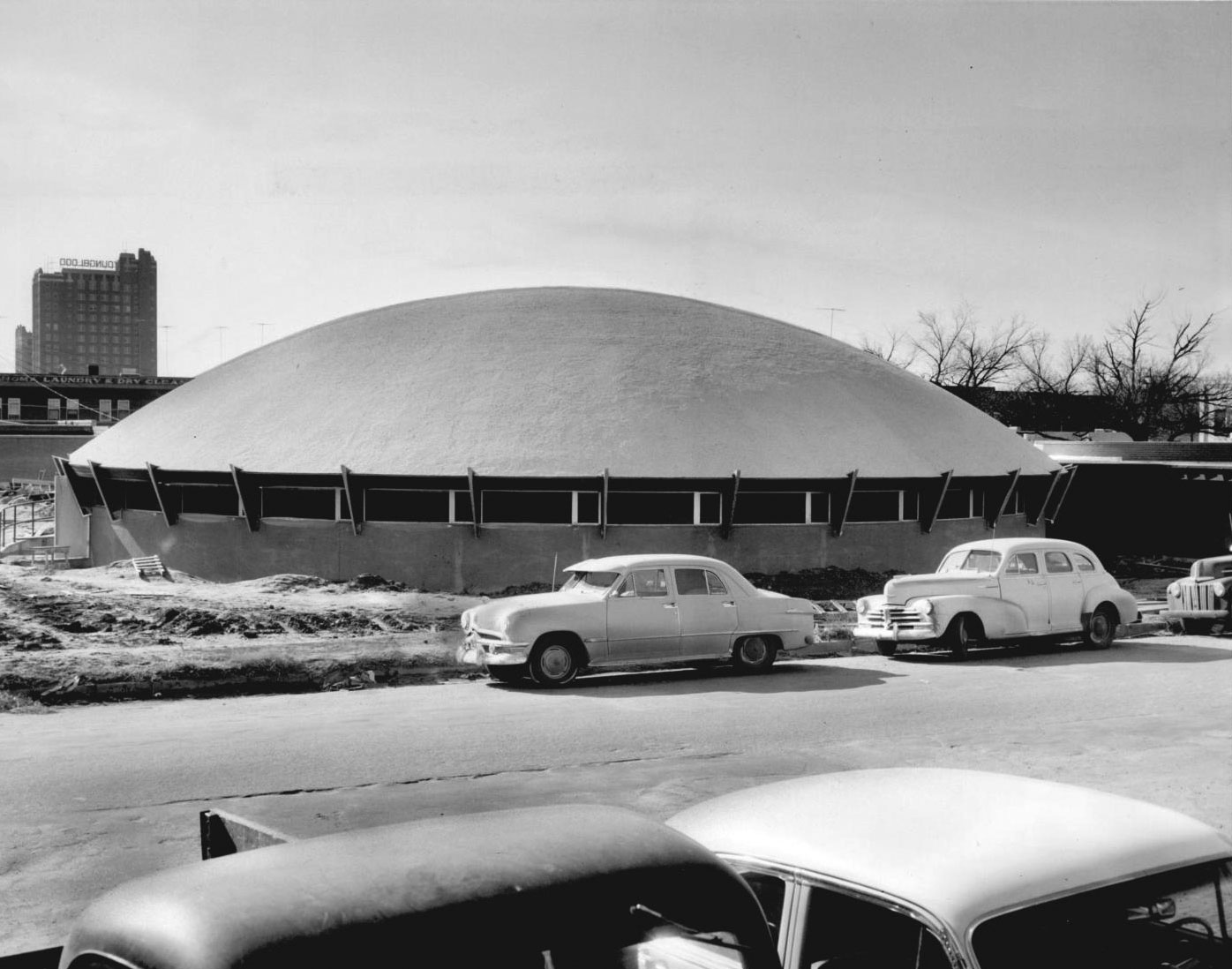
The Encyclopedia of Oklahoma History and Culture
ROGERS, THOMAS MELVIN (1920‒2004).
Enid’s most accomplished architect of the mid-twentieth century, Thomas (Tom) Melvin Rogers was born on September 26, 1920, in the small town of Avard, Oklahoma. He moved to Enid along with his older brother and mother after his father died in 1924. The family subsequently relocated to Stillwater, where Rogers graduated from high school and attended Oklahoma A&M University (now Oklahoma State University), obtaining a bachelor’s degree in architecture. With the outbreak of World War II Rogers registered for the draft in February 1942 and moved to Seattle, Washington, to work for Boeing as an engineer. He served in the U.S. Navy and moved back to Oklahoma after the war, enrolling in the University of Oklahoma to work under renowned architect Bruce Goff.
Rogers quickly made a name for himself professionally upon returning to in Enid in 1948. In July of that year a local newspaper praised the design of his personal residence at 214 North Nineteenth Street, which featured an open floor plan, glass-enclosed living room, and indoor flower garden. His forward-thinking designs caught on throughout Enid, which grew steadily throughout the postwar era due to the operation of Vance Air Force Base and the maturation of the petroleum and agricultural economic sectors. Such growth prompted suburban expansion throughout the small city as businesses, religious groups, and other organizations left downtown for larger facilities and homeowners relocated to new residential neighborhoods.
Rogers worked with a variety of designs that encompassed the Modern Movement (Mid-Century Modern) architectural style. Notable for its emphasis on function, the Modern Movement marked a break from the Revival styles of the late nineteenth and early twentieth centuries and embraced the use of new technologies and materials. Notable properties that Rogers designed by the end of the 1950s include the sprawling, 31,000-square-foot Union Equity Cooperative Exchange Building; the V.F.W. Post Home, featuring a domed roof and curved buff brick exterior walls; and Redeemer Lutheran Church, distinguished by a roofline with pointed, flared gable ends. He employed several former students of Bruce Goff, including Rex Slack and Earl Kastner. Goff himself toured the Union Equity Cooperative Exchange Building shortly after it opened, giving further credence to Thomas M. Rogers and Associates as the preeminent architecture firm for a mid-century city in Oklahoma.
Two Enid buildings currently listed in the National Register of Historic Places reflect Rogers’s versatility. Babe’s Package Store (NR 100001589), located at 220 South Third Street and constructed in 1959‒60, is an eight-sided commercial building featuring an exposed concrete and steel structure, glass walls, and concrete butterfly roof. It is among Enid’s finest examples of the Googie architectural style, notable for its Space Age‒influenced sharp angles, exaggerated shapes, and large windows. In contrast, the two-story, International-style Liberty Federal Savings and Loan Association Building (NR 100007233) at 401 West Broadway Street, constructed in 1965 with a 1979 addition, has a rectangular footprint, flat roof, and masonry walls absent of any ornamentation. Rogers designed a personal, circular office with a private balcony on the building’s second floor, from which he continued to design commercial, educational, financial, medical, and residential properties throughout Enid during the 1960s and 1970s.
Rogers married Lola Alvena Guy of Ardmore in August 1942. The couple went on to have three children. In addition to his professional work Rogers was active in the Lions Club, Toastmasters Club, and Chamber of Commerce. He served in local government as chairman of Enid’s planning commission, helping the city update its building and fire codes. A Navy veteran, Rogers joined the Enid Post of the V.F.W. and served as post commander for a time. He died in Enid on June 18, 2004.
See Also
ARCHITECTURE, BRUCE ALONZO GOFF, HERB GREENE, PAUL WESLEY HARRIS, ARTHUR BLAINE IMEL, JR., NATIONAL REGISTER OF HISTORIC PLACES






